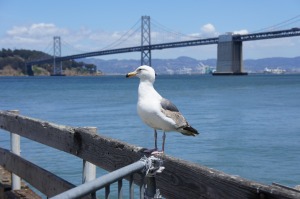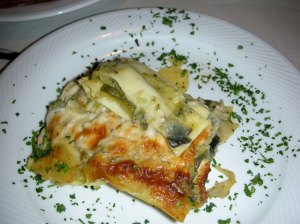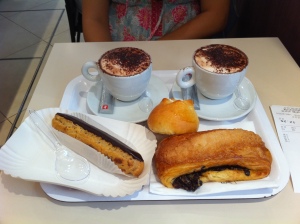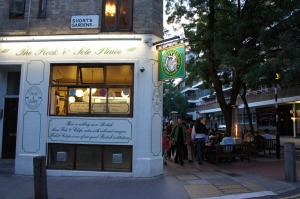Yountville. The West Coast mecca of 2 and 3 starred Michelin restaurants. Our good friends Snoopy and Peppermint Patty [yes, those are their aliases, not their real names] made a push for us in calling for reservations. Our best showing? Wait listed for any meals while we were in the Bay Area. In fact, we opted to stay another day longer to try and see if we can get a Friday or Saturday lunch time seating. For 5 days, my cellphone didn’t get any calls from an area code number starting with 707. The closest we came to dining at the French Laundry was actually visiting the restaurant, just down the road from their Bouchon bakery. We walked around in the garden and just sat at their bench for about 10 minutes. Taking it all in. Looking around to see the staff coming in and out with flowers for that evening’s service. Seeing the kitchen still buzzing and prepping for what will most likely turn out to be a busy night.
Like a giddy school girl waiting to see her own David Cassidy, I gushed when I saw Thomas Keller walk around the restaurant from the front to the kitchen. We were across the street in the French Laundry garden, seeing the vegetables they were growing for their daily menus. I’m sure if it wasn’t for all the hype and press around food over the last 10-15 years, we wouldn’t have even thought about who he is and what he does. But I think we all need to admit and accept that food is becoming more crucial in how we live our lives now. Organic versus non-organic. It all plays into where we are at with our overall health these days. On the other end of the spectrum, we have bog food conglomerates who continue to want to have us buy crappy frozen foods laden with just the things we can’t afford to have in our diets: sodium and sugar. So to see Thomas Keller is not just seeing another celebrity. It’s about what he and the restaurant represents. The highest quality both in food and service. Yes, it’s expensive and yes, it’s a meal that many people will never get a chance to eat due to its price. But we were close. We were thisclose but still so far away. Next time. We will have to plan our whole trip around this meal. A meal that can set the standard of all meals to come.


















